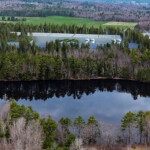Immediately after Cooke Aquaculture announced in mid-February that it euthanized three of 20 cages of salmon it was farming off the coast of Nova Scotia, industry opponents renewed calls to end the use of open-ocean net pens.
Suspecting that infectious salmon anemia (ISA) was present, the Blacks Harbor, New Brunswick, company followed its “proactive fish health management strategy” and destroyed the animals. The Canadian Food Inspection Agency later confirmed ISA in samples of fish taken from the site.
The flu-like ISA virus, while harmless to humans, has devastated production at salmon farms on several continents, including those in nearby New Brunswick and Maine and most notably Chile. The spread of ISA and other diseases from one pen to another is one of several reasons why conservationists want the industry to change its ways — and its locations — to prevent escapes and diseases and protect the environment.
The steepest obstacle to widespread industry adoption of land-based closed-containment aquaculture systems is the significant cost of designing and building such facilities. But some say the possibilities are being proven. A project in the hills of West Virginia that began last May aims to arm industry and investors with the confidence to boldly move where few farms have gone before — away from the shore.
Click here to read the full story from the April issue of SeaFood Business >





